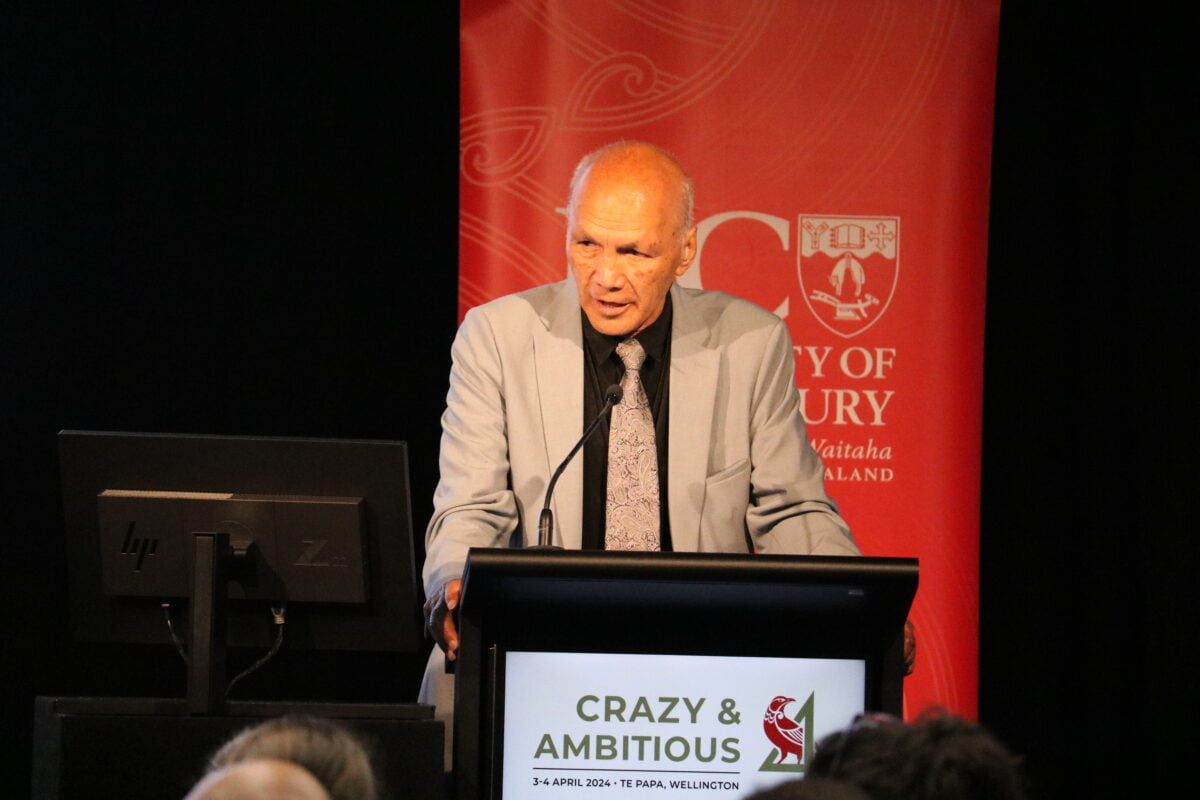Crazy & Ambitious 4, our final conference, began with what felt like a collective sigh of relief. After much preparation and anticipation, here we were, ready to share, learn, and celebrate.
During the mihi whakatau, we were reminded by our host that “Anyone who has had a glass of water in the last couple days, you now hold that taonga within you.” This reminder served to ground us. It grounded us in the physical place the conference was held – the Oceania room in Te Papa in Pōneke Wellington in Aotearoa New Zealand. But it also set an intention for the two days of the conference. We were all there to drink from the well of BioHeritage mahi and hold it with us as we continue into the unknowns of the future.
On the first day, research from the Whakamana impact area was presented, followed by Quickfire Presentations of research from across the Challenge, highlighting key achievements and next steps. On the second day, we heard from the Tiaki and Whakahou impact areas. Presentations were given by a mix of teams, community partners, early careers, as well as our seasoned research leaders. They highlighted the vast knowledge produced, including:

- Work on novel pest control using RNAi technology to target varroa mites and safeguard honeybees
- Community and Māori-led efforts with taonga freshwater species
- Mātauranga Māori-led and inspired research enhancing outcomes
- New biosecurity surveillance tools using AI and remote sensing, and development of advanced light traps

- A blueprint for a national DNA reference library to unleash the full potential of eDNA technology
- Eco-Index tools for decision-making and optimising biodiversity investment
- Evidence-based governance and policy tools, showcased in Me Tū ā-Uru
These presentations (which registrants can watch now using the conference app) highlighted the much broader implications and applications of the research to date. As Stacey Morrison commented, the work spoke “to the people who are in the door and still outside the door.”

The research presentations were punctuated by our amazing Keynote speakers: Tame Malcolm, Joshua Viers, Kevin Prime, and Estelle Pura Pera-Leask. A common theme each of these speakers wove into their talks was the importance of people in biodiversity, biosecurity and conservation mahi. Each of them was clearly touched by and connected with the community or communities that they work within.

Connection has been a central value of the Challenge and something that Kevin Prime spoke to in his keynote.
“[We] expected to develop tools, [but we] didn’t expect the connection with Māori,” said Kevin. “This Challenge has led to the creation of connections I’ve never seen before.”
The afternoon session on the last day was titled Closing with Impact. And what an impactful session it was. Helen Warburton started the session sharing research and reflections on how BioHeritage has gone about doing science differently and how high levels of collaboration across disciplines, networks and organisations has led to hundreds of diverse outputs beyond run-of-the-mill peer reviewed journal articles. The International Science Advisory Panel brought the Challenge into the context of the global stage, highlighting that the innovative approach the Challenge took is unique and one of the reasons it has been so successful. This global reflection was brought back home to the New Zealand context by Sarah Young, Executive Dean of the Science Faculty at the University of Canterbury, who reiterated the importance, value and future of mission-led science.
The Challenge’s values have been grown, upheld and nurtured by a continuous chain of passionate leaders. We heard from Bruce Clarkson, Andrea Byrom, Melanie Mark-Shadbolt, Rob Phillips, and Glenice Paine who shared the journey the Challenge has been on over the last ten years.
“It’s emotional to think how far we’ve come,” said Rob Phillips. “We’ve laid a foundation for taking things forward.”

“I feel incredibly privileged and humbled over this last ten years to work with people who are so dedicated and giving of themselves for this work,” said Glenice Paine.
While the conference has concluded, it is certainly not the end of the Challenge. First of all, videos of the conference presentations will be made available online soon and you can view and download the research briefs that were shared at the conference. But more importantly, much of this fine work will continue, in one form or another, into the future, fostered by the connection made during the last ten years.
Jenny Leonard
